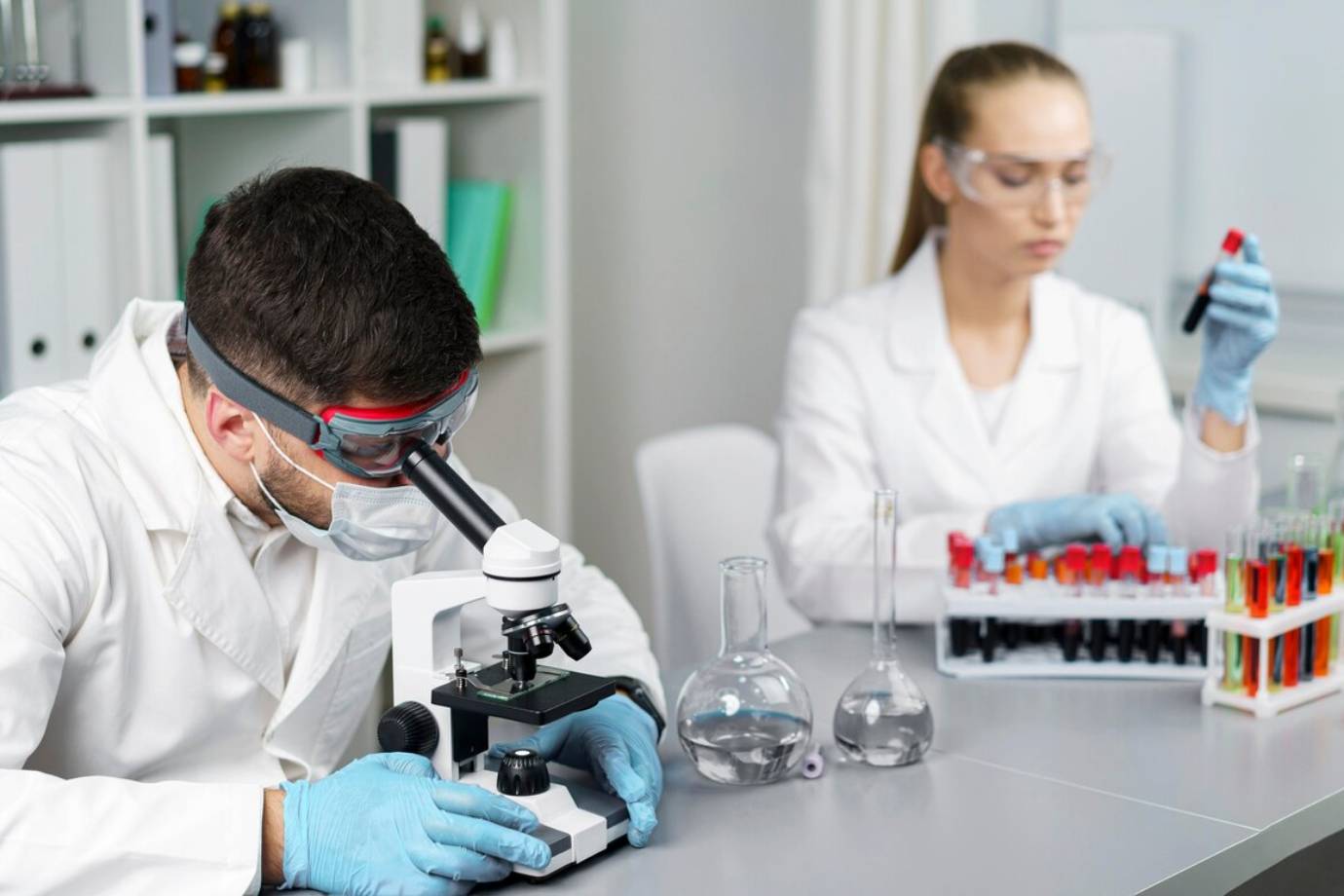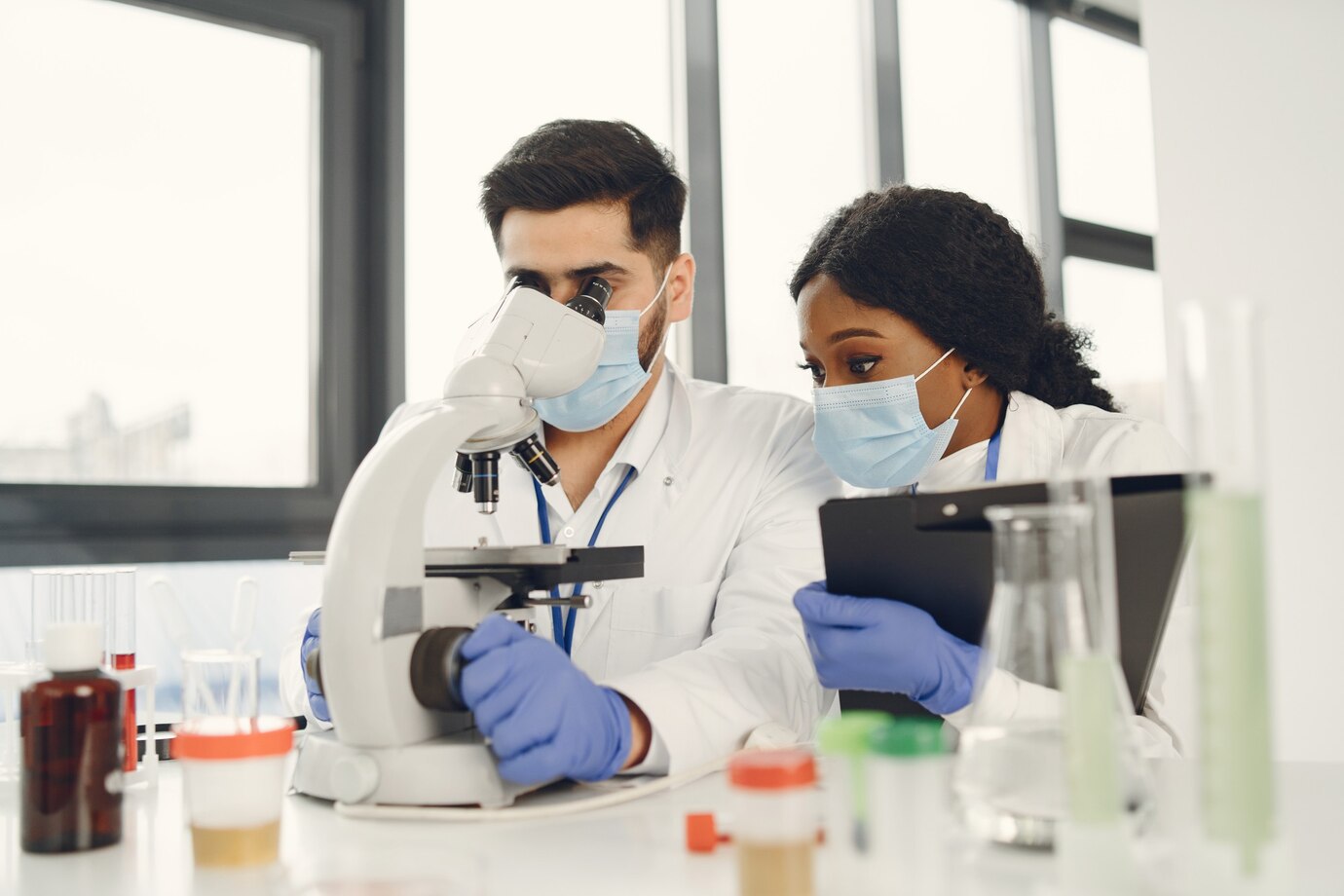Book on Whatsapp
9892101616
Will Pathology Tests Shift to A Digital World?
Pathology
Mon Oct 21 2024
The future of pathology is set to undergo a transformative shift, with digital technologies and AI-driven tools playing a central role in enhancing diagnostic processes. Pathology, like radiology, is now poised to embrace digitization, enabling quicker and more precise disease detection. However, its adoption has been slower compared to radiology due to the complexities involved.
Unlike radiology, where images are captured and digitized directly, pathology involves a series of intricate steps such as tissue processing, slide preparation, and staining. These must be completed before digitization, making the workflow more complex. Additionally, the size of pathology images, which can be 10 to 100 times larger than radiology images, presents challenges in storage, transmission, and manipulation.
Fortunately, advancements in technology are closing this gap. High-resolution scanners, faster data transmission systems, and cloud-based storage solutions have made it easier to handle large image files. AI and machine learning are also rapidly advancing, offering tools that can assist in image analysis, tumor detection, and quantitative biomarker evaluations.
Despite these advancements, two main obstacles remain: cost and acceptance. For wider adoption, payers must be convinced of the clinical value of digital pathology, as reimbursement for these technologies is not yet standardized. Evidence supporting cost-effectiveness and improved patient outcomes needs to be gathered and presented to insurance companies and healthcare providers. Furthermore, many diagnostic laboratories are already stretched to their limits, making it difficult to find the time and resources to adopt new technologies without disrupting daily operations.
Some pathology labs in India are taking a gradual approach by implementing digital pathology in specific areas such as prostate biopsies. This allows for testing and refining the technology before broader implementation, helping to drive acceptance among pathologists.
AI holds great promise in the future of pathology. It can serve as a valuable support tool, analyzing images quickly, aiding in complex diagnoses, and taking on tasks that are less directly related to diagnosis. The ultimate goal is to free up pathologists to focus on the most critical tasks, while AI assists with the rest.
The future of pathology is digital, with the potential to improve diagnostic accuracy, efficiency, and ultimately patient care. To ensure widespread adoption, it will be essential to demonstrate the value of these technologies to both labs and healthcare payers.
Related Tests
Related Packages
Related Blogs

Pathology
How Pathology Labs Ensure Accurate Results for Better Treatment
Laboratory tests to provide vital diagnostic information, and pathology labs are fundamental to modern healthcare. Precise and trustworthy testing is essential since the efficacy of medical therapy is directly impacted by the accuracy of the data from these labs. To guarantee the accuracy of their findings and, ultimately, assist medical professionals in making well-informed decisions on patient care, pathology labs use a range of methods, guidelines, and procedures. Here's how pathology laboratories guarantee precise findings that lead to improved care.
1. Use of Advanced Technology
Modern diagnostic tools and automated systems are purchased by pathology labs in order to improve test accuracy. For example, automated analysers ensure faster, more accurate findings with less human error when utilised for tasks like chemical analysis and blood cell counting. Technology breakthroughs like mass spectrometry to find biomarkers or polymerase chain reaction (PCR) for genetic testing enable labs to provide extremely specific tests that can diagnose illnesses in their earliest stages. By using these technologies, the lab can produce more precise and dependable data for improved treatment results.
2. Quality Control and Assurance
Maintaining the accuracy of results in pathology labs requires regular quality control (QC) activities. These protocols involve recalibration, regular inspections of laboratory equipment, and the use of control samples to ensure test accuracy. Additionally, lab staff members receive continual training to stay up to date on the latest methods and best practices. Furthermore, proficiency testing helps guarantee that testing procedures adhere to necessary standards by sending unknown samples to labs for testing and result comparison. This dedication to quality control is essential for preventing mistakes that can affect a patient's diagnosis and course of therapy.
3. Accurate Sample Handling
To guarantee reliable pathology results, sample processing must be done correctly. A sample's integrity may be jeopardised by improper sample collection, storage, or transportation, which could produce inaccurate results. When collecting samples, pathology labs adhere to strict protocols, which include utilising the appropriate containers and keeping the samples at the proper temperature. Samples should be clearly labelled with test information and patient identification to assist avoid contamination or confusion. Each sample is handled carefully by lab staff, who are trained to make sure it arrives at the lab in the best possible condition for analysis.
4. Collaboration with Healthcare Providers
Accurate results and wise treatment choices depend on pathology labs and healthcare professionals communicating effectively. To ensure that the right tests are conducted, pathologists frequently confer with physicians to elucidate the specifics of a patient's symptoms or medical history. Pathologists may get in touch with medical professionals to talk about more testing or different diagnostic strategies if the test results are ambiguous or need more research. This teamwork guarantees that the test results result in precise diagnoses and successful treatment strategies.
Conclusion
Effective healthcare depends critically on the pathology labs' test results being accurate. Pathology labs guarantee the accuracy and dependability of test results by following established procedures, utilising cutting-edge technology, implementing stringent quality control procedures, handling samples precisely, and working in tandem with medical professionals. In the end, these initiatives improve patient outcomes and advance healthcare by assisting physicians in making precise diagnoses and creating individualised treatment programs.

Pathology
How to Choose Affordable and Reliable Pathology Labs Near Pune
When you're searching for a decent pathology lab in and around Pune, it can be a bit tricky. Be that as it may, you can definitely relax! Picking the right lab is easier than you think. You simply have to know what to search for. We should discuss how you can find a lab that is both trustworthy and affordable.
Why a Decent Lab Matters
Suppose you're feeling unwell, and your doctor asks for tests to find out for what valid reason. The medical reports from the lab let your doctor know what's up. Thus, if the lab isn't great, the results probably won't be right. That is the reason picking a reliable e lab is so significant. The test results should be flawless.
Check their Reputation
To begin with, make an inquiry or two. Your companions, family, or even your primary care physician could know a decent lab close by. A lab with a solid standing is much of the time a protected decision. Numerous labs presently have audits on the web. Perusing these can let you know others' thought process. Assuming that most surveys are great, that is a green banner!
Search for Certificate
A top-notch lab is a reliable lab. Licenses and certifications mean the lab observes severe guidelines to guarantee precise outcomes. When you visit or call the lab, inquire as to whether they're registered. If they gladly say "Yes," it's a sign they care about quality.
Get some information about Costs
Excellent labs don't need to be costly. Call a couple of labs and request the costs of standard medical tests. Comparing expenses can assist you with tracking down a reasonable choice. A few labs likewise offer discounts or packages for different tests. If you're on a tight spending plan, these arrangements can be exceptionally useful.
Inquiring about the Staff and Gear
A lab is just on par with individuals and devices inside it. Cordial and thoroughly prepared staff have a major effect. Present day gear is likewise key for speedy and exact outcomes. If you visit the lab, notice assuming that it looks spotless and coordinated. These seemingly insignificant details can inform you a ton regarding their quality.
The Location Factor
Nobody likes traveling excessively far, particularly if you're not feeling great. Pick a lab near your home or office. A few labs have doorstep collection services, where they come to your home. This can save you time, money, and energy.
Speedy and Simple Reports
Waiting for reports can be upsetting. A decent lab gives reports quickly without committing errors. Numerous labs presently offer reports on the web. You can download them from your mobile phone or PC. This is really convenient!
Take as much time as necessary
Picking the right pathology lab near Pune is critical to monitor your health. Try not to rush the choice. By following these tips, you can find a lab that is dependable, reasonable, and ideal for your requirements. You can select Manipal TruTest to know more information concerning pathology tests.

Pathology
Murine Typhus: Symptoms, Treatment, and Prevention Tips
A rare case of murine typhus has recently been identified in Kerala, drawing attention to this uncommon bacterial infection transmitted by fleas. Although rare, murine typhus can cause a range of symptoms that are often mistaken for other, more common infections, making it challenging to diagnose and treat quickly. Here’s an overview of murine typhus, its symptoms, diagnostic methods, and prevention tips.
What is Murine Typhus?
Murine typhus, also known as endemic typhus, is a bacterial disease caused by Rickettsia typhi, primarily spread through the bite of infected fleas. While cases are uncommon, people living in areas with warm climates or where contact with rodents and flea-infested animals is frequent have a slightly higher risk. Fleas carrying Rickettsia typhi can transmit the bacteria to humans, resulting in a range of uncomfortable and potentially severe symptoms if left untreated.
Key Symptoms to Watch For
Symptoms of murine typhus often begin gradually, typically around 7-14 days after exposure. The early signs are flu-like, making it easy to confuse with common viral infections. Key symptoms may include:
- High Fever: Sudden onset of fever, often with chills.
- Headache: A persistent, throbbing headache that can last for days.
- Body and Muscle Aches: Widespread pain and soreness in the muscles and joints.
- Rash: Small, red spots may develop, beginning on the trunk and spreading to limbs.
- Gastrointestinal Issues: Nausea, vomiting, and sometimes abdominal pain.
In more severe cases, if not treated promptly, murine typhus can lead to complications such as pneumonia, liver or kidney damage, or central nervous system involvement.
Diagnosing Murine Typhus
Diagnosing murine typhus can be difficult since symptoms overlap with several other illnesses, including viral infections like dengue and flu. Here are some recommended diagnostic tests to confirm a murine typhus infection:
- Blood Tests: A complete blood count can help detect abnormalities in white blood cells and platelets, which may suggest infection.
- Serology Testing: Testing for antibodies specific to Rickettsia typhi can confirm a recent or active infection. However, antibodies may take some time to appear in the blood.
- Polymerase Chain Reaction (PCR): PCR tests on blood samples can detect the DNA of Rickettsia typhi, making it one of the most reliable methods for early detection.
- Immunohistochemical Staining: This test, typically done on tissue samples, can identify bacterial presence in the body.
Treatment and Recovery
Once diagnosed, murine typhus is typically treated with antibiotics, most commonly doxycycline. Early treatment is important to reduce the duration and severity of symptoms. Those who receive prompt treatment usually recover within a few weeks, though lingering symptoms like fatigue may persist for some time.
Prevention Tips
Preventing murine typhus mainly involves minimizing exposure to fleas and animals that might carry them. Here are some practical prevention steps:
- Limit Exposure to Rodents: Maintain a clean environment to discourage rodent infestations.
- Use Flea Control Products: Pet owners should use flea control treatments on animals to reduce the risk of fleas entering the home.
- Wear Protective Clothing: When spending time outdoors or in areas with rodents, wear long sleeves and pants to minimize exposure.
- Keep Living Spaces Clean: Regularly clean and vacuum to prevent flea infestation indoors.
